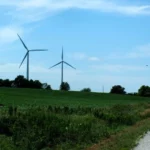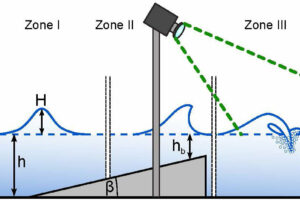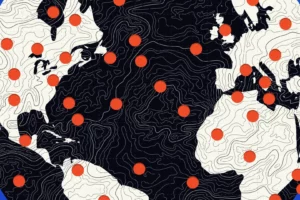The sulphur dioxide plume emitted by the large eruption in Iceland’s Reykjanes peninsula has reached Ireland and the United Kingdom and is moving towards Scandinavia. According to the Copernicus Atmosphere Monitoring Service (CAMS) global system, the plume is being transported over the Greenland and the Barents Seas and over Ireland and the United Kingdom. The latest CAMS forecast predicts the main plume to travel across Scandinavia and the Baltic states towards northwest Russia.
The eruption in Iceland’s Reykjanes peninsula on 17 March, the largest of the four eruptions recorded in the last four months in the area, has emitted large amounts of SO2 along with the slow flow of lava. A state of emergency has been declared in the region, but according to the Icelandic Met Office (IMO), the slow lava flows have spared the town of Grindavik, evacuated as a preventive measure. The famous touristic attraction of the Blue Lagoon and the area of Svarstengi have also been evacuated.
The lava is estimated to cover 5.85 km2 according to local authorities and the hazard levels remained very high, but the volcanic activity is “stable,” according to the IMO assessment on 18 March.
On this occasion the eruption took place without clear warning signs like earthquakes.
The amount of SO2 emitted by the eruption was well captured by satellite instruments, including Tropomi on the Copernicus Sentinel-5 Precursor satellite and GOME-2 on the EUMETSAT MetOp satellites, and assimilated into the CAMS system.
“The previous eruptions didn’t produce much in terms of SO2 emissions which could be observed and assimilated in our system,” says Mark Parrington, Senior Scientists at CAMS. “The amount of SO2 emitted this time has been very clear in the observations and we are closely monitoring the plume as it is transported over northern Europe,” he adds. “In our system we currently assume an initial injection of SO2 at 500 hPa, an altitude of about 5 km. The plume has been observed up to 4 km which means that the forecast transport is fairly reliable.”

In a press release, CAMS Director Laurence Rouil said: “Volcanic eruptions and releases of large amount of sulphur compounds can affect not only the air quality in the region directly affected, but also global processes, such as the concentration of ozone in the stratosphere. The impacts of the volcanic eruptions in Iceland in the atmosphere have not yet been so severe, but it is relevant to keep monitoring the evolution of the situation.”
The forecasts show the plume, with high total column burdens up to 10 Dobson Units moving east from the North Atlantic across Ireland and the UK, reaching Scandinavia on Wednesday and travelling across the Baltic and reaching the Baltic States, Poland, and northwestern Russia on Friday.
According to Santiago Arellano, Head of Unit, Geoscience and Remote Sensing, Space, Earth and Environment at Sweden’s Chalmers University of Technology, the preliminary ground-based observations only saw the decaying phase of the emission given that the most intense part of the eruption took place during the night, on 17 March. The SO2 emissions amount to some 10 kilotonnes at altitudes between surface and 4 km, according to IMO.
Source: AMS











Add Comment